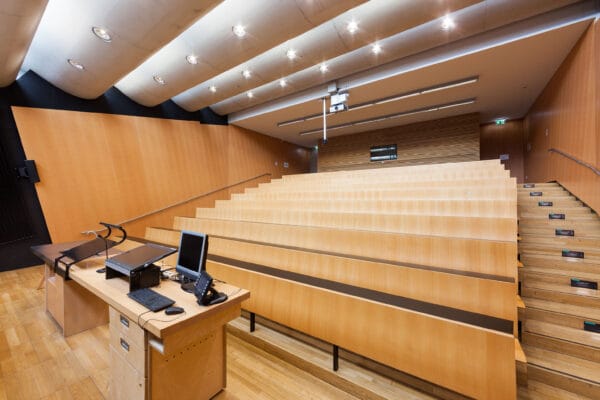
NAME:
SOWI - HS 2
BUILDING:
SOWI
FLOOR:
0
TYPE:
Lecture Hall
CAPACITY:
80
ACCESS:
Only Participants
EQUIPMENT:
Beamer, PC, WLAN (Eduroam), Overhead, Flipchart, Blackboard, Sound System, Handicapped Accessible, Light Installation
Due to the lack of high temporal and spatial resolution observations, the diurnal variation of the trapped lee wave (TLW) remains unknown. We employed the U-Net deep learning model to identify more than 3.5 thousand images with TLWs from over thirty thousand 500-m resolution Fengyun-4 satellite images with a 15-minute interval during the winter times from 2019 to 2023. Results shows that the wavelength is peaked at the late afternoon with high low-level winds and low atmospheric stability while the amplitude and propagating area are peaked at relative earlier afternoon with a most turbulent boundary in a day. The TLWs were further investigated in realistic and idealized large-eddy simulations by using WRF and ICON models, respectively. It is found that the effects of the stagnant and stable layer near the surface plays a wave-absorbing role in the nonlinear regime as in linear theories or simulations while the wave lengthening is largely related to the wind speed over the mountain.

We and use cookies and other tracking technologies to improve your experience on our website. We may store and/or access information on a device and process personal data, such as your IP address and browsing data, for personalised advertising and content, advertising and content measurement, audience research and services development. Additionally, we may utilize precise geolocation data and identification through device scanning.
Please note that your consent will be valid across all our subdomains. You can change or withdraw your consent at any time by clicking the “Consent Preferences” button at the bottom of your screen. We respect your choices and are committed to providing you with a transparent and secure browsing experience.